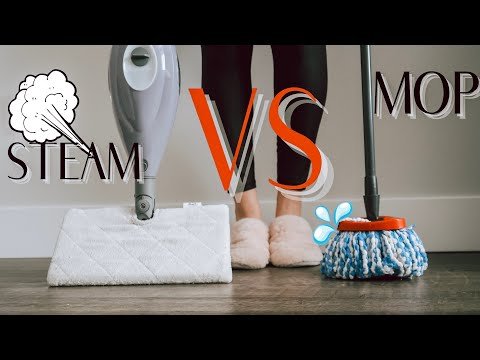Spin mops have revolutionized the realm of household cleaning, offering a modern, efficient alternative to traditional mops. Characterized by their unique design, spin mops typically consist of a microfiber mop head, a bucket equipped with a spinning mechanism, and a handle with a built-in wringing system. This design allows users to clean floors without getting their hands dirty or exerting excessive effort in wringing out the mop head. The primary function of spin mops is to provide a more convenient and effective way to clean various floor surfaces, from hardwood to tile, by ensuring that the mop head remains optimally damp, not overly wet or dry.
The appeal of spin mops lies in their ability to simplify the cleaning process. Unlike traditional mops that require manual wringing, often leading to uneven moisture distribution and increased physical strain, spin mops leverage centrifugal force to expel excess water. Users need only to press a pedal or twist the handle to activate the spinning mechanism, which efficiently removes water and debris from the mop head. This feature not only enhances cleaning efficiency but also extends the lifespan of the mop head by reducing wear and tear.
The widespread adoption of spin mops can be attributed to their convenience and performance, making them a staple in household cleaning. Their ergonomic design minimizes physical effort, while the microfiber material effectively captures dirt and dust, ensuring a thorough clean. As home cleaning innovations continue to evolve, the relevance of understanding the history and evolution of spin mops becomes clear. By examining how these tools have developed over time, we gain insight into the advancements in home cleaning technology and the continuous pursuit of more efficient, user-friendly solutions.
The origins of spin mops can be traced back to the late 20th century when the need for more efficient and labor-saving cleaning solutions became increasingly apparent. Traditional mops required significant physical effort and left users with wet hands, making the task of cleaning floors both cumbersome and unhygienic. These challenges catalyzed the innovation of the spin mop, which aimed to streamline the cleaning process and enhance user convenience.
One of the earliest patents for a rotary mop was filed in the 1990s, signaling a pivotal shift in the design and functionality of household cleaning tools. The initial designs focused on incorporating a spinning mechanism that allowed users to wring out excess water without direct contact with the mop head. This was typically achieved through a combination of centrifugal force and a foot pedal or hand-operated lever, which spun the mop head within a bucket to expel dirty water.
Key inventors and companies quickly recognized the market potential of this innovative cleaning tool. Joy Mangano, an American inventor and entrepreneur, is often credited with popularizing the concept of the self-wringing mop through her invention of the Miracle Mop in the early 1990s. Although not a spin mop in the strictest sense, the Miracle Mop laid the groundwork for subsequent innovations by emphasizing ease of use and improved hygiene.
In the years that followed, several companies and inventors contributed to the evolution of the spin mop. The development of more sophisticated designs, which included built-in spinning mechanisms within the mop bucket, further simplified the cleaning process. Brands such as O-Cedar and Vileda became prominent players in the market, introducing models that combined durability with enhanced functionality.
The commercialization of spin mops was driven by the growing consumer demand for products that could make household chores less labor-intensive. As a result, the spin mop rapidly gained popularity, becoming a staple in many households worldwide. This early innovation set the stage for ongoing advancements, leading to the diverse and efficient spin mop designs available today.
In This Article
Technological Advancements and Design Improvements
Since their inception, spin mops have undergone significant technological advancements and design improvements. Early models were rudimentary, often relying on manual twisting and wringing techniques that were neither efficient nor user-friendly. Over time, advancements in materials and mechanisms have substantially enhanced these cleaning tools, making them more effective and easier to use.
One of the most notable advancements in spin mops is the evolution of materials used in their construction. Modern spin mops often feature microfiber heads, which are known for their superior absorbency and ability to trap dirt and debris efficiently. Microfiber is not only more durable than traditional cotton but also more effective at cleaning various surfaces, including hardwood, tile, and laminate flooring.
Enhancements in the spinning mechanism have also played a critical role in the evolution of spin mops. Early models required significant manual effort to wring out excess water. The introduction of hands-free wringing mechanisms, such as foot pedals and bucket-mounted spin systems, has made the process significantly easier. These innovations allow users to control the moisture level of the mop head without getting their hands dirty, thereby enhancing both convenience and hygiene.
Ergonomic design improvements have further contributed to the user-friendliness of spin mops. Modern designs often feature adjustable handles, making it easier for users of varying heights to operate the mop comfortably. Additionally, the inclusion of 360-degree spinning capabilities allows for greater maneuverability, enabling users to clean hard-to-reach areas with ease.
These technological advancements and design improvements have had a profound impact on the efficiency and popularity of spin mops. Enhanced materials and innovative mechanisms have made these cleaning tools more effective and easier to use, leading to increased consumer satisfaction. As a result, spin mops have become a staple in households and commercial settings alike, solidifying their place in the market as indispensable cleaning tools.
The Future of Spin Mops and Their Place in Modern Cleaning
The cleaning industry is continuously evolving, and spin mops are no exception. With advancements in technology and growing consumer demands, the future of spin mops looks promising and dynamic. One of the emerging trends is the integration of smart sensors. These sensors can detect the level of dirt on the floor and adjust the mop’s pressure and water usage accordingly, ensuring efficient and effective cleaning. This automation not only enhances performance but also simplifies the cleaning process, making it more user-friendly.
Another innovative feature on the horizon is the inclusion of automated functionalities in spin mops. Imagine a mop that can autonomously move across the floor, similar to robotic vacuums. These advancements could significantly reduce the manual effort required, making spin mops an even more attractive option for busy households and commercial spaces. As these technologies become more affordable and accessible, their adoption is likely to increase, leading to a new era of smart cleaning tools.
Consumer preferences are also shifting towards more sustainable and eco-friendly products. In response, manufacturers are exploring the use of biodegradable and recyclable materials in spin mops. The emphasis on environmental consciousness is driving innovation in this area, with companies developing mops that have minimal impact on the planet. This trend is not only beneficial for the environment but also appeals to the growing segment of eco-conscious consumers.
Market demands are continually evolving, and spin mops must adapt to stay relevant. Multifunctionality is becoming a key feature, with consumers seeking cleaning tools that can perform various tasks. Future spin mops might incorporate detachable components or interchangeable heads, allowing them to be used for different cleaning purposes, from mopping floors to scrubbing surfaces.
In conclusion, the future of spin mops is set to be shaped by technological advancements, changing consumer preferences, and a strong push towards sustainability. These factors will likely lead to the development of more efficient, versatile, and environmentally friendly cleaning solutions, solidifying the place of spin mops in modern cleaning routines.









